Ancient Egypt, one of the world’s oldest civilizations, left an indelible mark on history with its rich culture, impressive architecture, and intricate belief systems. Among the many fascinating aspects of ancient Egyptian culture, symbols played a crucial role in conveying meanings, beliefs, and stories. These symbols were artistic expressions and held deep religious and cultural significance. In this blog, we will explore some of the most famous ancient Egyptian symbols, unravel their meanings, and shed light on their profound cultural context.
⬇️⬇️GET 25% OFF OF YOUR TRIP TO EGYPT 2025/2026 ⬇️⬇️
Ancient Egyptian Symbols: A Window into a Fascinating Civilization
Ancient Egyptian symbols were used during different periods of Egyptian civilization to represent all kinds of concepts and ideas from their mythology. Many of these symbols were related to some Egyptian gods. The Egyptians used these symbols to decorate their temples, represent their gods in their inscriptions, and make amulets to cope with the difficulties.
In many cases, the symbology that some images have in their context brings us to a deeper level of understanding. Especially this happens in Egypt, where magic and man are intertwined, in many cases imitating the external form of some object and linking it to deities with certain characteristics. We know that the Egyptians did not seek to recreate reality but to give presence and shape to those realities that are shown under various masks and that carry within themselves the true essence.
Some of these ancient Egyptian symbols were inherited from previous civilizations while others appeared during different periods of the Egyptian civilization. In some cases, the following symbols also have their equivalent within the Egyptian writing system based on hieroglyphics.
We will take you on a tour through this article to get acquainted with the most important and famous ancient Egyptian symbols and their meanings as they were used and their different names.
Don’t stop reading; there’s a lot to discover!

1- Ancient Egyptian Symbols: Egyptian Ankh
The symbol of the cross “Ankh”, also known as Anj, is an ancient Egyptian hieroglyph that symbolizes eternal life and is one of the most famous ancient Egyptian symbols. This is one of the hieroglyphs that appears most in both the texts and Egyptian art always in relation to the gods.
The Egyptians had the belief that the gods had dominion over eternal life. For this reason, the depictions of their gods with the Ankh symbolized their power over life and death “Egyptian symbol of death”. Many times the gods were represented by holding an ankh by its tie with their hands. It is also common to represent the gods with crossed arms and an Ankh in each handheld by its lower end.
Representations of a god holding the Ankh near the lips near some pharaohs are also common. This symbolizes the offering by the gods of the breath of life, which is necessary for life beyond the grave.
The Egyptians also considered the Ankh to be an amulet that they wore. They also made mirrors in the shape of the Ankh to represent the mutual reflection of life and death.
Although it is perhaps one of the most important Egyptian symbols there are different theories about its origin but none of them is conclusive. A variation of the Ankh cross was later adopted by Coptic Christians as a symbol of their faith.
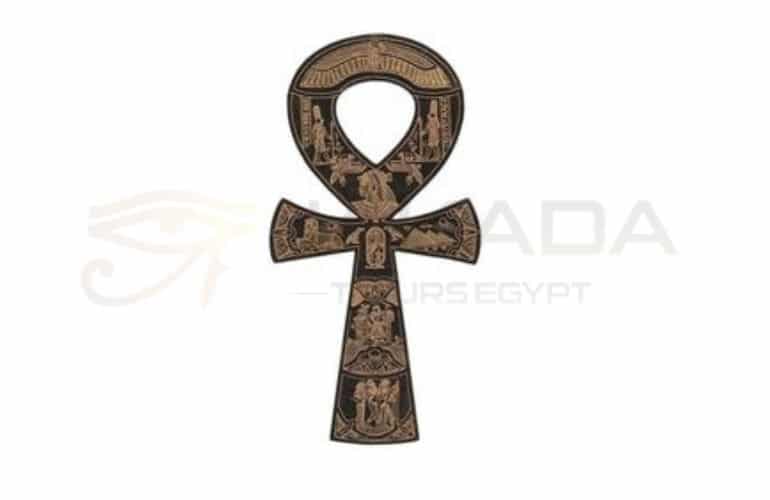
2- Ancient Egyptian Symbols: Eye of Horus
The Eye of Horus is an ancient Egyptian symbols that relates to good health and protection. The symbol comes from the god Horus, the god of heaven represented in the form of a hawk or a man with a hawk’s head.
According to Egyptian mythology Osiris, the father of Horus, was killed by his brother Seth. Horus sought revenge and in a series of encounters with Seth, he lost his left eye. The god Tot, the god of magic and wisdom, was able to restore the eye of Horus and this, in turn, offered the eye to Osiris to restore life. For this reason, the eye of Horus could also symbolize sacrifice, recovery, and protection.
The two eyes of Horus have a special symbolism in Egyptian mythology. Traditionally his right eye was associated with the Sun, while the left eye was associated with the Moon. This left eye was mostly known as the Eye of Horus, while the right eye was called the Eye of Ra since Ra was the god of the Sun. Although the two eyes are different symbols they refer to very similar concepts.
It was also a common tradition among the Egyptians to make funeral amulets in the shape of the eye of Horus.

3- Ancient Egyptian Symbols: Scarab Beetle
The Scarab beetle is an ancient Egyptian symbol linked to the god Jepri, a sun god seen as one of the possible forms of the sun god Ra.
The dung beetles deposit their eggs in balls of dung which they then introduce into some hole in the ground. This led the Egyptians to think that these beetles were self-producing and equated this property to that of the god Jepri, who is reborn every day as the Sun. For this reason, the beetle within the Egyptian world can be understood as a symbol of the rising Sun.
The Egyptians made all kinds of beetle-shaped amulets, known as scarabs, to symbolize the Sun, the resurrection, and to obtain its protection in life and death.
They also made funeral amulets in the shape of a beetle. In this case, they used to be bigger and with hawk wings. These amulets were placed over the heart of the deceased to protect him on his journey to the underworld. [ Read more about The Egyptian scarab beetle and its meaning ]

4- Ancient Egyptian Symbols: Pilar Djed
The Djed Pillar is one of the ancient symbols in Egyptian mythology. It symbolizes strength and stability and is related to the creator god Ptah and Osiris, the god of death. Because of its association with the god Osiris this symbol is also known as the backbone of Osiris.
The Egyptians often made amulets in the shape of the symbol of Pilar Djed. These were for both the living and the dead, in which case they were placed near the spine.
It was also usual to decorate the bottom of the coffins with an engraving following the shape of the Pilar Dyed, centered in the same space where the spine of the deceased would be placed.
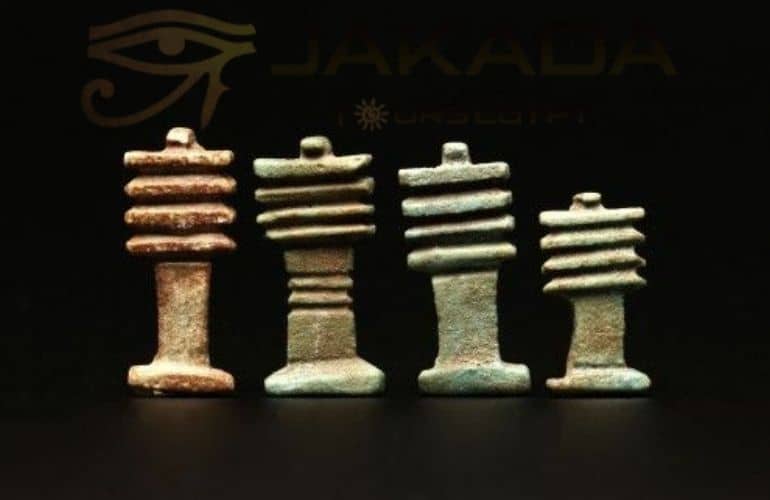
5- The ancient Egyptian symbol “Tyet”
This symbol, also known as the Knot of Isis, is an ancient Egyptian symbol representing the goddess Isis.
This is a symbol of unknown origin but has a certain geometric similarity to the symbol of the Ankh. Also, its meaning is similar to that of the Anj as it is considered that the Tyet symbolizes life and welfare.
The denomination of the knot of Isis has its origin in the similarity of this symbol with the knots used to hold the dresses of the gods.
This symbol often appears accompanied by Pilar Dyed, the symbol of the god of death Osiris. This has led some experts to interpret this joint representation as a symbol of the duality between life and death.
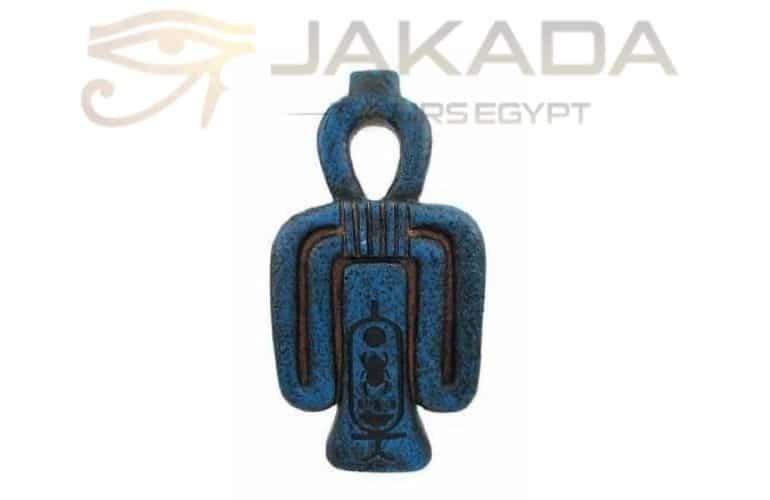
6- Ancient Egyptian Symbols: Maat’s pen
In Egyptian mythology, Maat is an abstract concept related to justice and truth. This concept was often represented as a goddess, daughter of Ra. One of the attributes of this goddess was that she had an ostrich feather on her head, known as Maat’s feather.
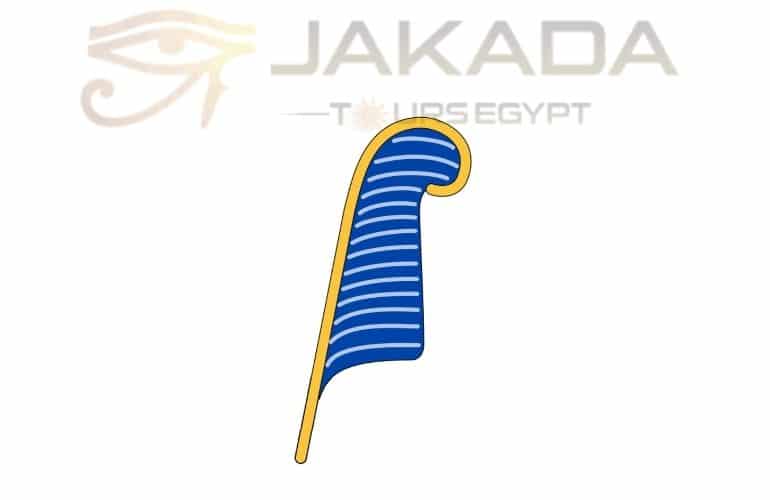
7- Egyptian Maat
This pen was used according to Egyptian beliefs during the trial of Osiris. This trial took place when a deceased person arrived in the underworld. During the trial of Osiris, the heart of the deceased was placed on one side of a scale, and the feather of Maat on the other. If the heart, due to the sins it harbored, weighed more than Maat’s feather, it was considered that the deceased had no right to access the underworld life and was devoured by the goddess Ammyt.
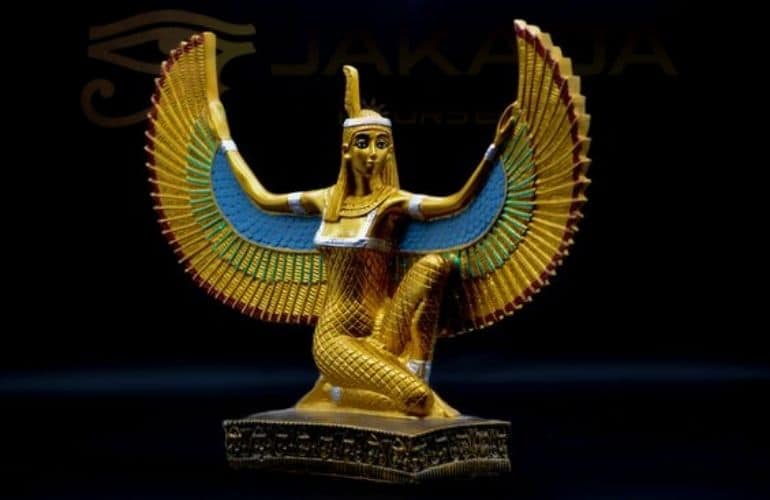
8- Ka and Ba
Ka and Ba are two names that according to Egyptian beliefs represent the two parts of the human soul.
Ka was a spiritual essence of every person received at birth. The Ka was considered an essence independent of the human body but which had to remain within it. Even after the person’s death, the Ka remained inside his body waiting for the moment to be able to meet the Ba to undertake the journey to the underworld.
The Ba is also an abstract concept related to the unique features of a person, something that in some way can be understood as his personality and that continued to live after death. The Ba would leave the person’s body after death to travel to the underworld. He could return to the grave to meet the Ka again until, after the judgment of Osiris, the two could be reunited for life in the underworld.
The symbol of the Ka refers to Heka, an Egyptian deity related to magic. The Ba, on the other hand, was represented in the form of a bird’s body and a human head.

9- Seba
This ancient Egyptian symbol was used in Egyptian art to represent the stars. The Egyptians had a good knowledge of the stars and the constellations. They often used this symbol to decorate the temples and the interior of the tombs.
The Egyptians believed that the stars also inhabited the Duat, the underworld and that they descended there every night to accompany the Sun. The symbol of a star inside a circle was a way of representing the underworld.

10- Shen Ring
The Shen ring is a symbol of a circle with a tangent line representing a knotted rope and symbolizing eternity and protection. The word that designates this symbol, Shen, means in Egyptian to surround. In some cases, this symbol was drawn with a more elongated shape to become a cartridge inside which was written the name of some pharaohs. This served to symbolize that the ring Shen protected the pharaoh forever.
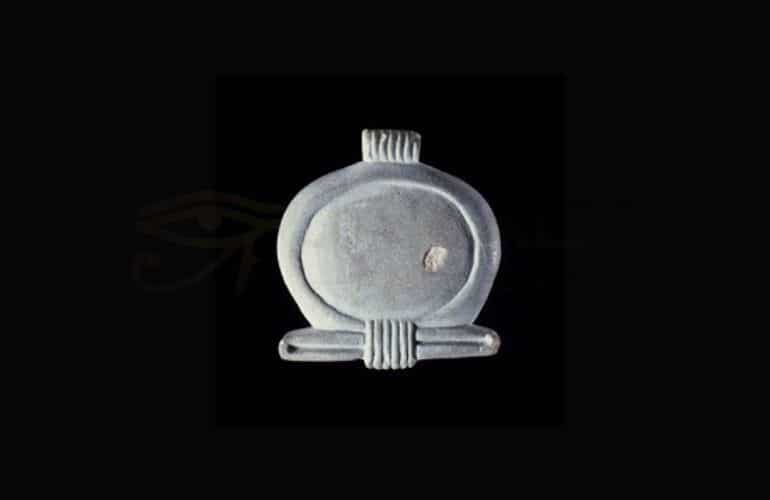
11- Scepter Uas or Was
The scepter Uas, also known as was, was an Egyptian symbol representing power and dominance. It was usually depicted in the hands of some god or pharaoh. This symbol consisted of a scepter with a forked base. Its top was usually decorated with the head of some magical creature.
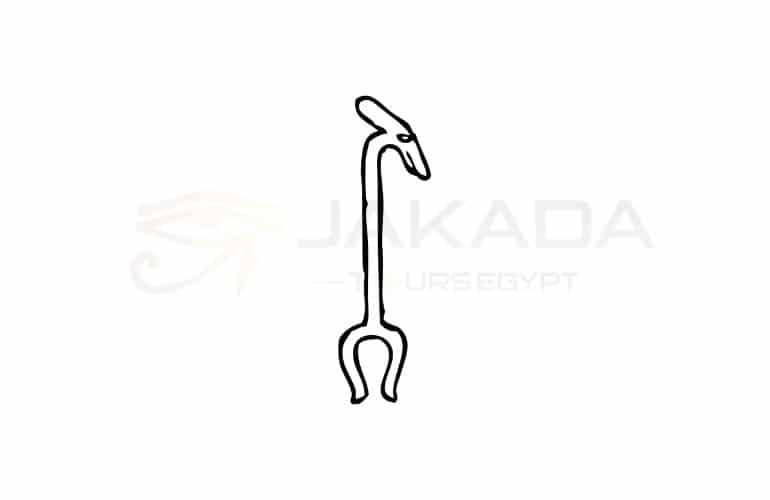
12- Uraeus
Uraeus is a representation of the cobra goddess Uadyet used to symbolize the strength and authority of the pharaohs. This icon in Egyptian mythology often appeared on crowns and funeral masks to represent the link between pharaohs and gods.
Apart from its function with the pharaohs, Uraeus was also used with ornamental functions in jewelry and amulets. It was also used in some cases as a hieroglyphic.
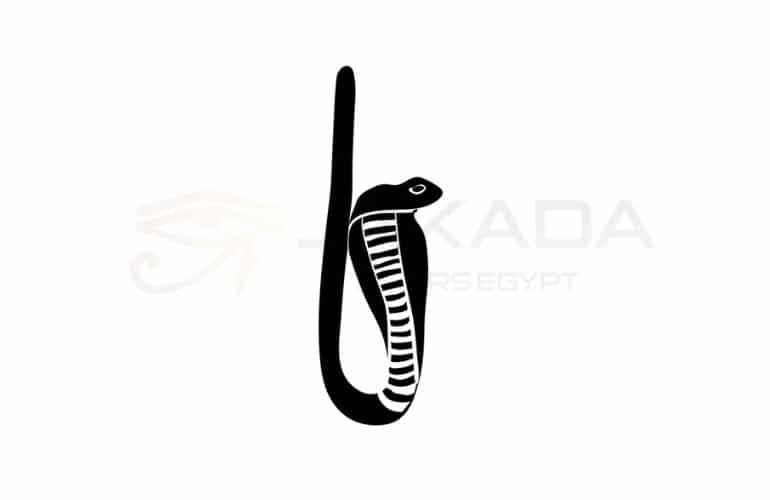
13- Crook and flail
The Cayado (Heka) and the Mayal (Nekhakha) were originally two emblems of the god Osiris but with time they came to symbolize the authority of the pharaohs. Specifically, the staff represented the Pharaoh as the shepherd of his people while the flail symbolized the role of the Pharaoh as the provider of food to his people.

14- Ajet
Ajet is an Egyptian hieroglyph representing the sunrise and the horizon. Among the Egyptians, it was common to have amulets in the shape of this symbol to represent the sunrise and the rebirth of the Sun every morning.
This symbol was often depicted as being guarded by the two lions of the god of the horizon, Aker.

15- Menat
The Menat was an Egyptian necklace with a characteristic shape and a counterweight to keep it in the right position. This necklace was associated with the goddess Hathor and her son Ihy. According to Egyptian mythology, it was the amulet from which the goddess Hathor emitted her power. In many of her representations, it can be interpreted as a symbol of fertility, birth, life, and renewal.
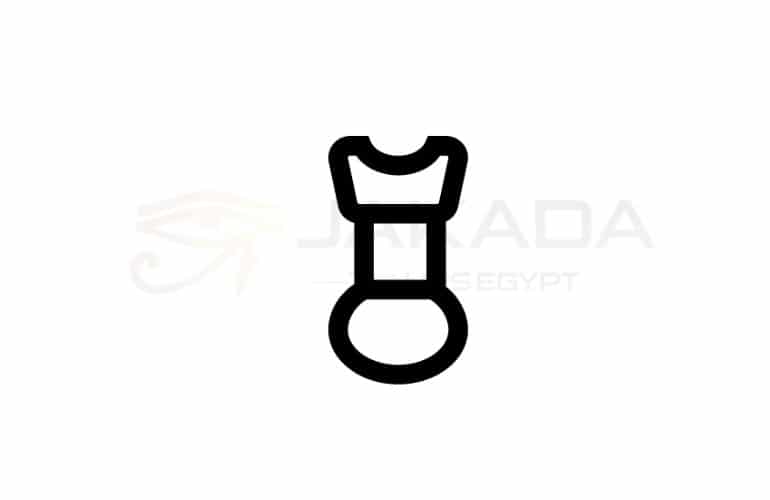
16- Winged solar disk
The winged solar disk is a symbol of ancient Egypt but also used in other ancient cultures. This symbol was also known as Behdety as it was used in the temples to represent the god Behdety, the god of the midday sun.
This symbol was used as an amulet to provide protection to the Egyptians who wore it. In some cases, it has also been depicted as an attribute of other Egyptian gods.

17- Sistrum
The sistrum was an ancient Egyptian instrument used in rituals to worship the goddesses Hathor, Isis, and Bastet. This instrument had a similar shape to the Anj symbol and consisted of a handle and a series of metal pieces that produced a characteristic sound when shaken.
The goddesses Isis and Bastet were often represented holding one of these instruments. The Egyptians used this symbol to represent scenes related to dance and festivity. There is also a hieroglyph in the shape of the sistrum.

18- The Eye of Ra
The Eye of Ra. The eye symbol is associated with the protective goddess Wadjet during the Predynastic Period and remained so even though it was later more regularly associated with Horus, Ra, and others through the Distant Goddess motif. ( Read a full article about Eye Of Ra )
The distant story of the goddess has many forms in Egyptian mythology, but one consistent pattern: a goddess somehow rebels against the king of the gods, leaves her home and her responsibilities behind to travel to a distant land and must be brought back (or tricked into returning) thus initiating some kind of transformation. The Wadjet represented the goddess or was sent to retrieve her and could take many forms. As the Eye of Ra was understood to symbolize her watchful presence over creation and is often depicted in myths (such as those of the distant goddess) it is sent to gather information for Ra.
Wadjet remained a consistently powerful symbol throughout Egyptian history.

19- Egyptian Ouroboros
The Ouroboros is a symbol that shows a snake-like animal that swallows its own tail and forms a circle with its body. The Ouroboros symbolizes the eternal cycle of things, also the eternal effort, the eternal struggle, or the useless effort, since the cycle starts again in spite of the actions to prevent it.

20- Cartouche
A symbol of protection for the ancient Egyptian pharaohs, the “Cartouche” or “cartridge” has become a highly sought-after craft jewel in Egypt.
The “cartouches” in the hieroglyphic writing are the representation of a knotted rope that surrounds the name of the pharaoh, protecting him for eternity.
Nowadays, tourists and the Egyptians themselves like to use them in different metals such as silver, copper, and gold, among other metals, according to the budget of the purchaser.
It has an elliptical shape and closes in a tight knot. Inside, the names and surnames of the person who wears it are placed in Egyptian hieroglyphics, with symbols of their ancestors as they did for the ancient pharaohs.
The name “cartridge” or sacred circle that contains the royal onomastics, is not an Egyptian term, it corresponds to the French appellation “cartouche”, given by Napoleon’s soldiers during their expedition to Egypt at the end of the 18th century, because of its similarity to ammunition cartridges.

21- Lotus symbol
The lotus flower is a sacred plant in ancient Egypt, where it is portrayed inside the pyramids and in the temples. According to tradition, the flower is related to the creation of the world and to the god Vishnu, in whose navel a lotus flower was born from which in turn another deity, Brahma, creator of the cosmos and life, would be born. Likewise, another legend places the birth of the sun god Horus also from a lotus flower.

22- Canopic jars
A canopic vessel is a container that was used during ancient Egypt to deposit the viscera of the dead but not before having undergone a process of washing and embalming. The process was intended to keep intact the image of unity that the body should have.
The name comes from Greek, it is said that it was in a city with the same name where the ship pilot of Menelaus found his death. It is also said that in the city of Canopus, located near Alexandria, was the place where the god Osiris was represented in the form of a vessel, but with a human head.
During the Egyptian period, there were four different types of canopic vessels that, in turn, came to represent the Sons of Horus, divinities that were believed to be destined to protect their contents from possible destruction. These gods were the ones we refer to below:
Amset: This was the human-headed vessel we mentioned earlier. Its function was to preserve the liver.
Hapy: This vessel, on the other hand, had the lid in the shape of a papion’s head (a type of primate) and in it, the lungs were kept.
Kebeshenuef: This vessel was characterized by its lid in the shape of a hawk’s head, and was intended to house the intestines.
Duamutef: Its lid was shaped like a jackal, and it preserved the stomach of the dead.
In turn, each of these canopic vessels was under the protection of a goddess, namely: Isis, Nephthys, Selkis and Neit, whose mission was to guide them to the four cardinal points, the arrangement being as follows: the liver to the south, the lungs to the north, the intestines to the west and the stomach to the east.
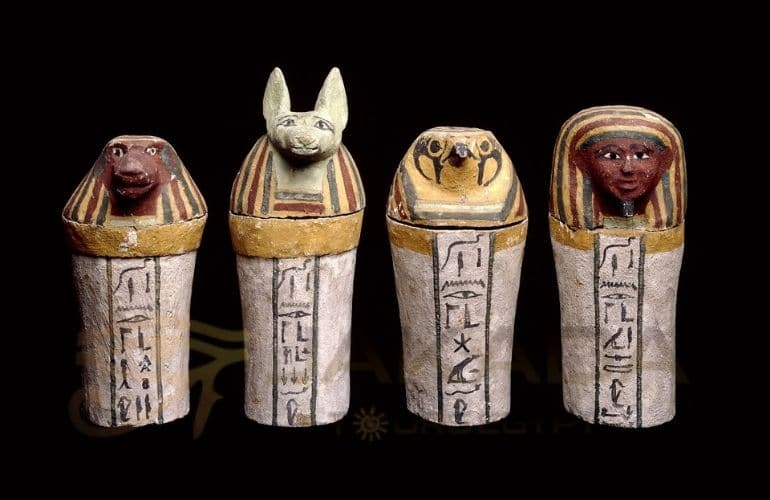
23- Deshret crown
Deshret, from ancient Egypt, was the formal name of the Red Crown of Lower Egypt and the red desert land on either side of Kemet (Black Land), the fertile Nile river basin. When combined with the Hedjet (white crown) of Upper Egypt, which forms the Pschent (Double Crown), in ancient Egypt it calls the Sekhmet.
In mythology, the earth deity Geb, the original ruler of Egypt, reversed Horus with the ruler over Lower Egypt. The Egyptian pharaohs, who were considered to be Horus’ successors, wore the Deshret as a symbol of their authority over Lower Egypt. Other deities wore the Deshret as well or were identified with it, such as the protective serpent goddess Uadyet and the creator goddess of Sais, Neith, who is often shown wearing the Red Crown.
The late Red Crown would be combined with the white crown of Upper Egypt to form the double crown, which symbolizes the rule throughout the country, “The Two Lands”, as the Egyptians expressed it.
As far as Deshret, the Red Land, which comprised the deserts and foreign lands surrounding Egypt, was concerned, Seth was its master. It was considered a region of chaos, lawless, and full of dangers.
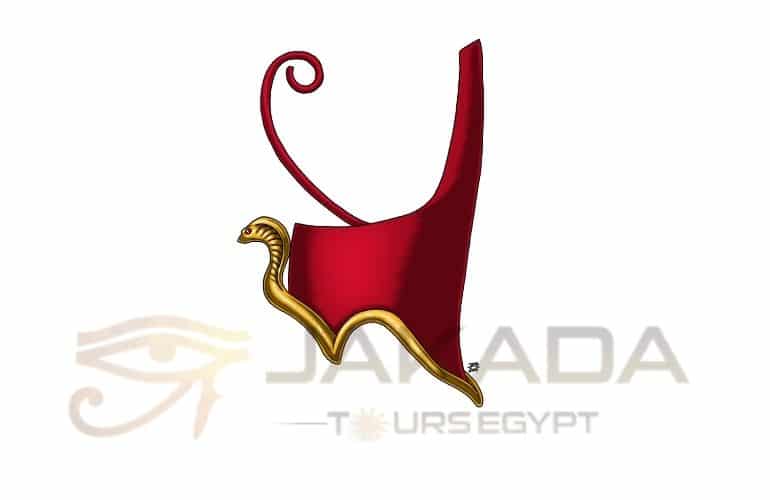
24- Hedjet crown
Hedjet is the formal name for the white crown of pharaonic Egypt. After the unification of Upper and Lower Egypt, it was combined with the deshret , the red crown of Lower Egypt, to form the Pschent, the double crown of Egypt. The symbol sometimes used for the white crown was the vulture goddess Nekhbet shown near the head of the cobra goddess Wadjet, the uraeus on Pschent.

25- Pschent crown
The Pschent was the double crown worn by rulers in Egypt. The ancient Egyptians generally referred to it as Sekhmet, the two most powerful. It joined the red Deshret Crown of Lower Egypt and the white Hedjet Crown of Egypt.
The Pschent represented the pharaohs’ power over all unified Egypt. He carried two animal emblems: an Egyptian cobra, known as the uraeus, ready to strike, which symbolized the Lower Egyptian goddess Wadjet; and a vulture representing the Egyptian tutelary superior goddess Nekhbet. These were fixed to the front of the Pschent and used for the two ladies. Subsequently, the vaulted vulture head was replaced by a second cobra.
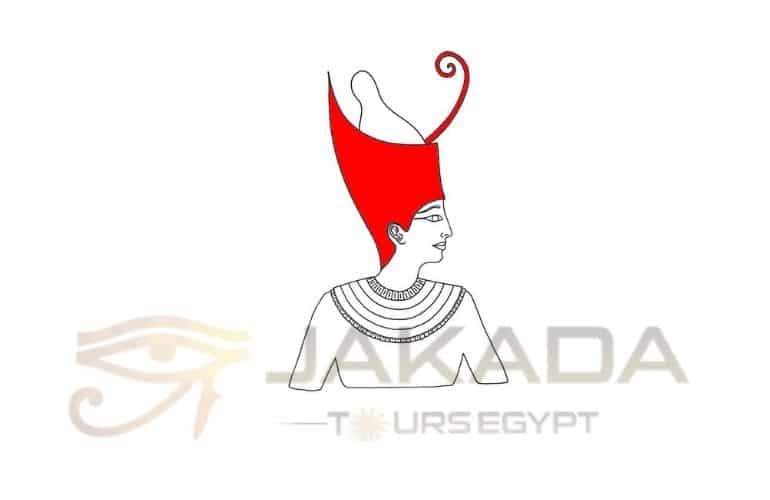
26- Tree of life symbol
In Egypt, there were several kinds of acacia trees, some with thorns. All of them have hardwood and therefore were related to eternal life and rebirth. Gum arabic was obtained from it but it could also be used for medical purposes since an astringent substance is obtained from its green fruits.
The acacia is mentioned very often in Egyptian texts from the Ancient Kingdom and was soon related to the goddesses Iusausa of Heliopolis, Hathor, Nut, and Sejmet, giving it a solar sense.
It was understood that the divine community was born under this tree and that he decided on the life and death of beings.
It seems that the acacia tree was also linked, in some way, with Osiris and that in the representations where the tomb of this god can be seen, a series of trees appear that could be identified with the acacia.
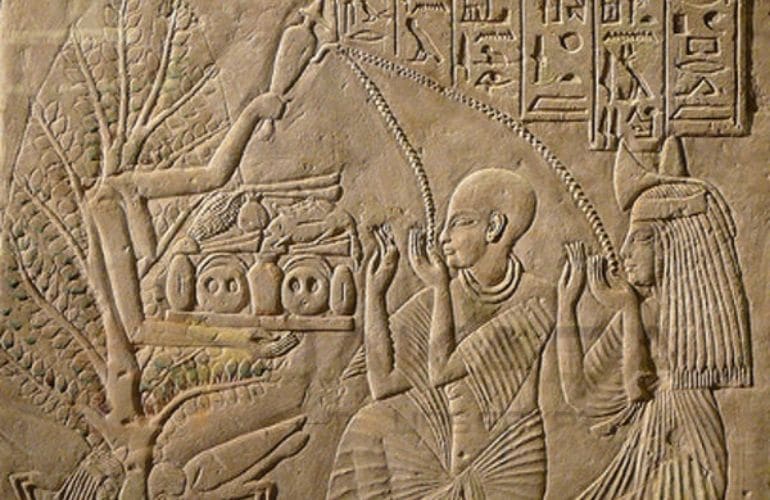
Here are some short questions and answers about Ancient Egyptian symbols:
What is the symbol for the sun?
- Ra
What is the symbol for the moon?
- Thoth
What is the symbol for the Nile River?
- Hapi
What is the symbol for the sky?
- Nut
What is the symbol for the earth?
- Geb
What is the symbol for the ankh?
- Life and eternity
What is the symbol for the scarab beetle?
- Resurrection and rebirth
What is the symbol for the eye of Horus?
- Protection and healing
What is the symbol for the feather of Maat?
- Truth and justice
What is the symbol for the djed pillar?
- Stability and permanence
Here is a video for the famous ancient Egyptian symbols and their meanings
To download this article ” Ancient Egyptian Symbols” in PDF [ Click Here ]
You can visit Egypt with our Egypt Vacation packages [ start from 240$ ] or you can create your tour with our Egypt Tailor made
The best Egypt Family Tours!











